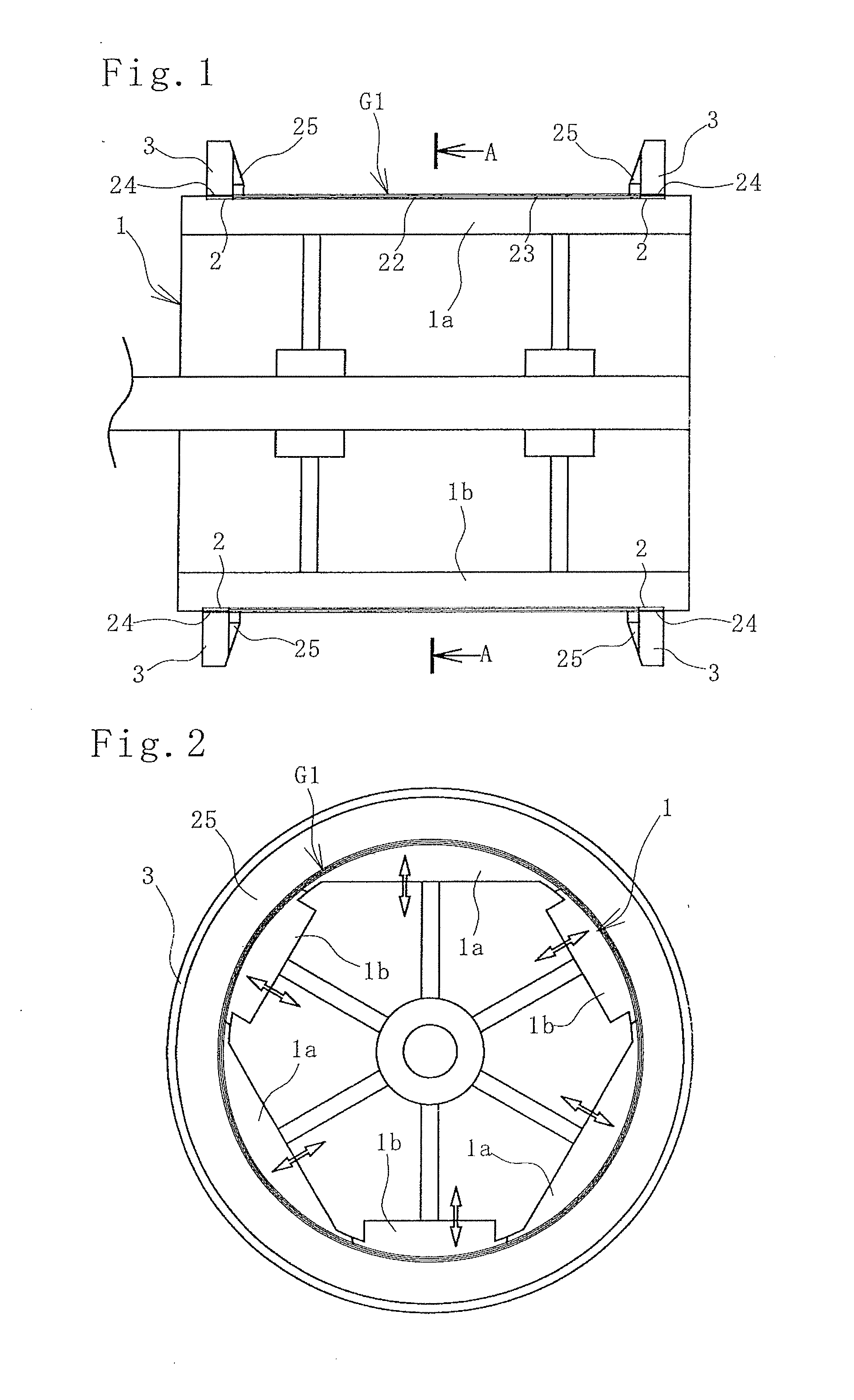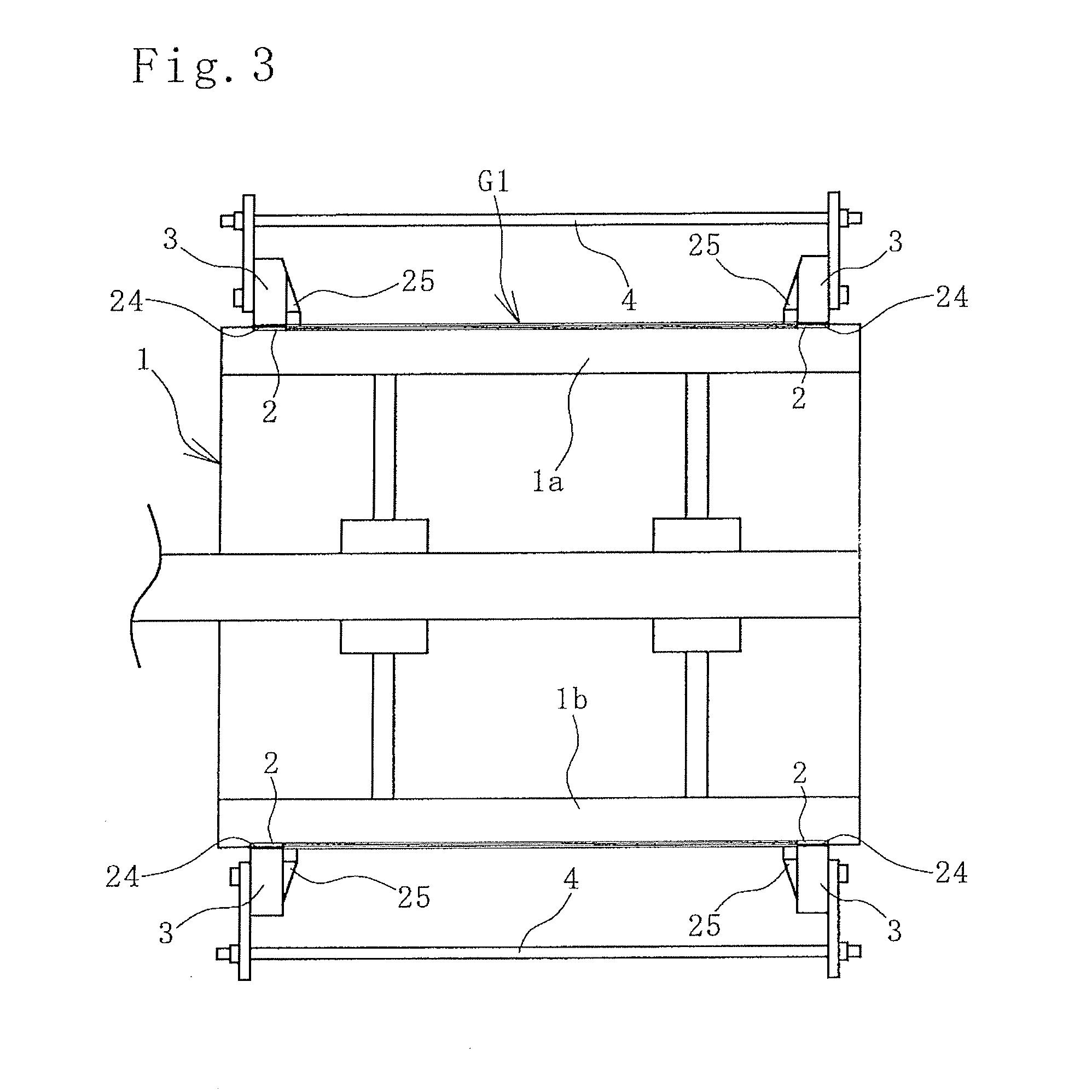Method of manufacturing pneumatic tire
a manufacturing method and tire technology, applied in the field of pneumatic tire manufacturing, can solve the problems of small pressing force acting on the inner peripheral surface of the green tire, difficult to correct non-uniformity, limited improvement in the uniformity of the cured tire, etc., and achieve the effect of smooth transfer, improved uniformity of the tires to be manufactured, and correction of non-uniformity
- Summary
- Abstract
- Description
- Claims
- Application Information
AI Technical Summary
Benefits of technology
Problems solved by technology
Method used
Image
Examples
Embodiment Construction
[0034]Hereinafter, a method of manufacturing a pneumatic tire according to the present invention is described based on the embodiments shown in the drawings. The same reference numerals are used for the same members before and after curing.
[0035]FIG. 18 illustrates a pneumatic tire 21 manufactured by the present invention. In the pneumatic tire 21, a carcass material 24 is laid between a pair of bead rings 25, and the carcass material 24 is folded back around a bead core 25a from the inner side to the outer side. A tie rubber 23 and a film 22 are stacked on the inner peripheral side of the carcass material 24. The film 22 on the innermost side is an inner layer which prevents air penetration, and the film 22 and the carcass material 24 are bonded securely by the tie rubber 23 interposed therebetween. A rubber member forming a sidewall portion 26, and a rubber member forming a tread portion 28 are provided on the outer peripheral side of the carcass material 24.
[0036]A belt layer 27 ...
PUM
| Property | Measurement | Unit |
|---|---|---|
| pressure | aaaaa | aaaaa |
| thickness | aaaaa | aaaaa |
| thickness | aaaaa | aaaaa |
Abstract
Description
Claims
Application Information
 Login to View More
Login to View More - R&D
- Intellectual Property
- Life Sciences
- Materials
- Tech Scout
- Unparalleled Data Quality
- Higher Quality Content
- 60% Fewer Hallucinations
Browse by: Latest US Patents, China's latest patents, Technical Efficacy Thesaurus, Application Domain, Technology Topic, Popular Technical Reports.
© 2025 PatSnap. All rights reserved.Legal|Privacy policy|Modern Slavery Act Transparency Statement|Sitemap|About US| Contact US: help@patsnap.com



